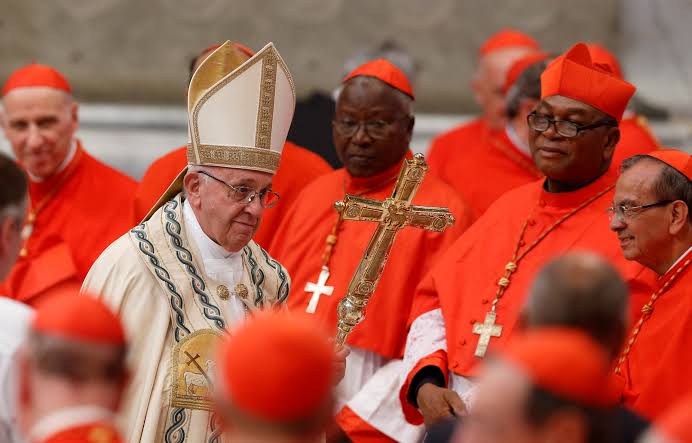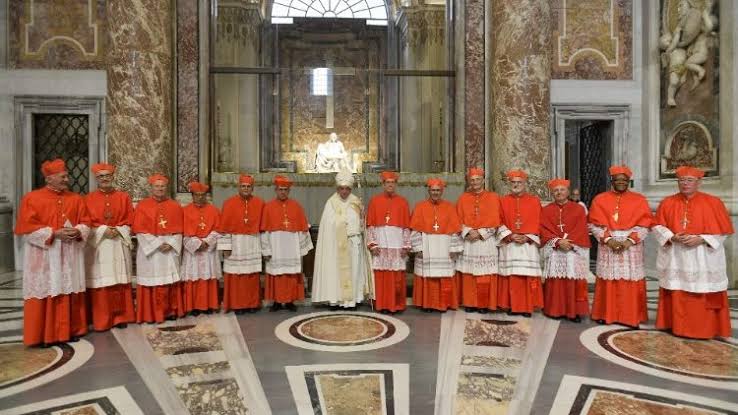
Cardinal-designates from five continents receive their red hat from Pope Francis on Saturday. Members of three religious orders will enter the College of Cardinals, and four new countries will be represented therein: Mongolia, Paraguay, Singapore and East Timor. At the conclusion, they will approve the canonization of the founder of the Scalabrinians, Giovanni Battista Scalabrini, and Salesian layman, Artemide Zatti.
Existing and new members of the College of Cardinals from every corner of the globe gather in Rome on Saturday, 27 August, for Pope Francis’ eighth Consistory, where he creates 20 new cardinals, 16 of whom are under the age of 80, thus electors in a future Conclave, and four non-electors, over the age of 80.

The celebration marks a universal Consistory, with Church leaders from the five continents. It will also be a “mixed” Consistory with the creation of the 20 new cardinals, who vote shortly afterwards on the causes for canonization of two Blesseds. The Consistory takes place at the end of August, which is usually a quiet period, and includes other celebrations over the next two days and next week with the reflection and in-depth study meeting on Praedicate Evangelium, the Apostolic Constitution reforming the Roman Curia.
Rite of creation of new Cardinals
The rite during which Pope Francis will place the red biretta on the new Cardinals, give them their ring, and assign them their title and rank takes place at 4 p.m. in St. Peter’s Basilica.

It begins with the singing of “Tu es Petrus” and words of thanksgiving to the Holy Father by the Cardinal first on the list. The Pope pronounces the formula of creation of new cardinals, who promises their allegiance and obedience to the Pope and his successors “even unto the outpouring of blood.”
One by one they approach the seat of the Pope to receive on their knees the symbols of the cardinalate: red skullcap, biretta, ring, the bull assigning the title and rank. Each receives an embrace of peace from Pope Francis, a gesture repeated immediately afterward by the Cardinal Dean, the senior Cardinal Priest and senior Cardinal Deacon, representing the entire College of Cardinals.
Vote on the canonizations
Saturday’s rite of creation is to be followed by the Ordinary Public Consistory for the vote on the canonization of Blesseds Giovanni Battista Scalabrini, Bishop of Piacenza, founder of the Congregation of the Missionaries of St. Charles and the Congregation of the Missionary Sisters of St. Charles Borromeo, better known as the Scalabrinians, and Artemide Zatti, a professed Salesian layman.
Cardinal Marcello Semeraro, Prefect of the Dicastery for the Causes of Saints, reads the Peroratio and briefly presents the biographies of the Blesseds. The Pope then gives the outcome of the votes and names the day for the canonizations.
At the end, he leaves the Basilica through the Door of Prayer with the new Cardinals, and likely proceeds to the Mater Ecclesiae Monastery in the Vatican Gardens to visit and greet Pope Emeritus Benedict XVI, a gesture he has made every Consistory so far.
Post-Consistory congratulatory visits
From 6 to 8 p.m., the new Cardinals then greet the faithful of Rome and those visiting from their home countries for the customary post-Consistory congratulatory visits. These visits take place in the Paul VI Hall and the Apostolic Palace.
Then they gather together on the following Monday and Tuesday, 29 and 30 August, for two days of in-depth study of Praedicate Evangelium, and finally, on Tuesday at 5:30 p.m., they celebrate Mass together with Pope Francis in St. Peter’s Basilica.
Universality and the peripheries
The names of the new Cardinals were announced by the Pope from the window of the Apostolic Palace during the Angelus on 29 May, along with a request to pray for them “so that, in confirming their fidelity to Christ, they may help me in my ministry as Bishop of Rome for the good of all God’s holy faithful people.”
The list of names confirmed the twofold criterion seen in the previous seven consistories of Pope Francis. They are internationality, with a special focus on the global south, and attention to the peripheries, that is, the border territories that historically have never had a Cardinal, rather than places traditionally considered “Cardinal-sees.”


